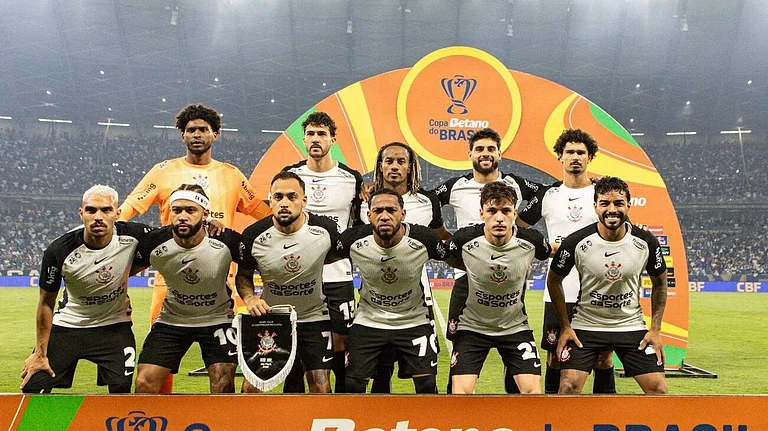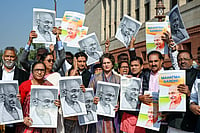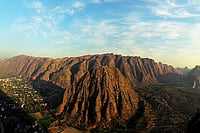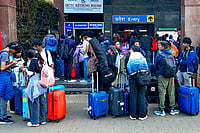THE people of Afghanistan remain subject to terrors of the never-ending ethno-religious civil war. The expectation that the three-year Taliban campaign to achieve unified control over Afghanistan was coming to a successful end, with their temporary capture of Mazar-e-Sharif in the fourth week of May, has not been fulfilled. Ground realities are subject to daily changes. The Taliban has been pushed back from the northern and north-eastern provinces. Abdul Rashid Dostum and Burhanuddin Rabbani remain in exile. A new Uzbek general, Abdul Malik, has emerged as a leading figure in Uzbek resistance to Taliban after having helped them capture Mazar-e-Sharif. Ahmed Shah Masood continues to fight against the Taliban.
A new alliance of Uzbek/Tajik and Shia forces opposing the Taliban was forged on June 3. So despite Taliban controlling most of Afghanistan, territorially, the civil war situation which was supposed to end stands revived. It would thus be pertinent to go beyond current uncertainties and examine Afghan prospects in depth, despite these being clouded by politico-military ferment.
The general perception, that the seesaw battle will continue for some time with the Taliban retaining the upper hand, is correct. But before one begins an assessment of the situation on the ground, attention should be drawn to the fact that Pakistan, Iran, Uzbekistan and Tajikistan remain concerned about developments in Afghanistan and are engaged in political and military manoeuvres to see that the emerging power structure in Afghanistan is responsive to their respective interests. The US and Saudi Arabia are generally supportive of the Taliban and Pakistani objectives in Afghanistan. Iran, in conjunction with the UN, India and Russia to some extent, has been trying to redress the imbalances in the emerging situation. And China views the emergence of an orthodox regime with reservations.
The active interest being shown by the US and several US-backed Argentine companies in exploiting the oil and natural gas resources available in Turkmenistan to pipe this down to Pakistan through west central Afghanistan adds a strategic economic dimension to the crisis. India is also interested in accessing natural gas from Turkmenistan through Pakistan, which requires not only the emergence of a stable regime in Afghanistan but a regime with a positive attitude towards New Delhi. Pakistani and Afghan cooperation is necessary if India is to benefit from the potentially rich oil and natural gas resources in Turkmenistan and Iran.
Ground realities in Afghanistan, however, remain uncertain and volatile. The Taliban control nearly 22 out of the 32 provinces of Afghanistan. They control the entire territory of central, eastern and southern Afghanistan in an are stretching from Herat to Jalalabad in the east. The Uzbeks control the northern areas in provinces constituting the northern edge of Afghanistan from the north of Herat to Kunduz. Masood controls the northeastern edge of Afghanistan from Kunduz eastwards and the Panjsher valley. Karim Khalili's Shia forces control a pocket of territory around Hamian, northwest of Kabul and north of Ghazni.
'The Taliban's dominance owes much to its superior weapons systems and finances. The Taliban forces are estimated to be around 50,000.They are equipped with armoured vehicles and combat planes and helicopters. While the Uzbeks and Masood have more manpower, about 85,000, their strength in terms of weapons and logistical support does not match Taliban's. The Taliban are reported to be receiving financial assistance to the tune of nearly $96 million per month. Dostum, Masood and Khalili, in contrast, are not getting this kind of support from Russia, Uzbekistan, Iran or Pakistan. Hence, the Taliban's calculation that they ultimately will be able to consolidate their control over most of Afghanistan. This is why they did not participate in the peace conferences organised by Tehran late last year and in January 1997.
In this context, it is significant that while Iran remains in contact with Rabbani, Gulbuddin Hekmatyar, Dostum and Masood, it has diluted its political connections with them--because it is keen to bring the Taliban to the negotiating table. Iran's strategy is based on political realism and acknowledgement that the Taliban are representative of the dominant ethnic religious segment of Afghan society, the Pushtoons. Iran realises that ignoring a victorious Taliban in the peace process will prevent any political solution at this juncture and the alternative would be a prolonged military conflict, for which Iran, Russia and other Central Asian republics would have to provide long-term material and military assistance to anti-Taliban forces.
But this state of affairs is not likely to last long, for Iran and the Central Asian republics have vital economic and ethno-religious interests in northern Afghanistan. The northern regions of Afghanistan, especially areas like Mazar-e-Sharif, Shiberghan and Saripul, are rich in natural gas. It is estimated that this region has 150 to 500 billion cubic metres of natural gas and nearly a 100 million barrels of oil. These areas, which are populated by Uzbeks, Tajiks, Hazaras, Turkmens, Kirghiz and Nooristanis, are predominantly Shia.
The Iranian peace initiative is aimed at safeguarding these interests. In the first phase they would like a compromise with the Taliban. The Taliban, in contrast, desire a solution under the umbrella of the UN, as they expect the US to strike a solution in their favour. If the contradicting motivations of the UN and the Iranian peace initiatives lead to a stalemate, there are possibilities of Iran and the Central Asian republics effecting a solution based on leaving most of Afghanistan under the control of the Taliban, while backing Dostum and Masood to carve northern Afghanistan as a separate entity, which would include the resource rich areas mentioned above. But any fragmentation of Afghanistan would have a centrifugal impact on the unity of Pakistan.
India's interest lies in participating in the Iranian peace initiative and being part of deliberations at the UN to ensure that whatever solution is put in place in Afghanistan serves its economic and geopolitical interests--in sustaining substantial linkages with Afghanistan, Iran and the Central Asian republics. It is important that India adopts a flexible approach even towards the Taliban despite its reservations about certain aspects of their policies and the Taliban's present anti-india stance. India should also be willing to deal with whichever power structure is in control in different parts of Afghanistan. The need of the hour is a nuanced, calibrated approach towards competing factions seeking control over Afghanistan. This would best serve Indian interests.


























